Calculations
Determine Your Profit Margin
What is Burn Rate?

Knowing your profit margin gives you the insights needed to make better business decisions. Whether you’re planning growth, evaluating new projects, or analyzing pricing strategies, understanding your margins ensures you stay on track. Thomas & Ledger provides small businesses in Boise, Meridian, and Nampa with tools and guidance to track trends, manage finances, and focus on growth.
Take control of your business finances with our easy-to-use Profit Margin Calculator and start making informed decisions today.
Burn rate measures how quickly a small business is spending its available cash. This is especially important for startups, early-stage businesses, and growing companies—particularly those backed by venture capital—who may be operating at a planned loss while investing heavily in growth on their path to profitability.
Understanding your burn rate helps you determine your cash runway—the amount of time your business can continue operating under current conditions before running out of funds.
To calculate it, review past Cash Flow Statements and note your cash balances for a specific period. For example, to find last year’s burn rate, record your cash balance at the start of the year, your balance at the end, and the number of months in between.
The calculator will then estimate how much cash you’re using each month. A positive number means you’re spending more than you’re bringing in, while a negative number indicates you’re generating surplus cash each month.
Understanding Profit Margin
Profit margin is the percentage of your sales that turns into profit. For example, a 20% profit margin means that for every $1.00 of sales, your business earns $0.20 in profit. Essentially, profit margin shows how profitable your pricing is. A low profit margin leaves little room for unexpected costs like rising product prices or shipping, while a higher margin provides more flexibility. Regardless of your margin, it’s always smart to look for ways to improve efficiency and strengthen your bottom line.
Use Our Profit Margin Calculator
Thomas & Ledger’s Profit Margin Calculator helps you quickly determine your Gross Profit Margin—your profit after subtracting the cost of goods from revenue. You can also use it to explore different pricing or cost scenarios, calculate target revenue, or find an optimal cost structure for your products or services.
Using Burn Rate to Your Advantage
For many new companies—especially startups in fast-growing industries—profitability can take years to achieve. During these early, lean stages, businesses often rely on multiple rounds of venture capital funding to sustain operations. These funds are typically invested in projects designed to drive long-term growth, and investors watch closely to ensure the money is being used wisely.
Burn rate offers valuable insight into how efficiently a company is managing its cash. A rate that’s too high may indicate overspending, while a rate that’s too low could signal missed opportunities for growth. The key is finding the right balance to meet your business goals.
Your cash runway, calculated alongside burn rate, estimates how long your current reserves will last under present conditions. Since funding rounds often occur every 12–18 months, understanding both your burn rate and cash runway is essential for planning ahead and ensuring your company is prepared for its next stage of growth.
The Burn Rate Calculator
Insert your company cash balances from the past months to calculate your burn rate and cash runway.
How to Calculate Burn Rate
Burn Rate = (Starting Cash Balance – Ending Cash Balance) ÷ Number of Months
Example:
Let’s say your new company just secured $1,000,000 from a venture capital firm—congratulations! This funding allows you to hire staff, invest in technology, upgrade equipment, expand office space, or make other major growth-focused investments.
As you start spending on these initiatives, your cash balance will naturally begin to decline. That’s why it’s critical to be strategic about where and when you allocate funds, and to plan ahead for your next potential round of fundraising. Monitoring your burn rate regularly helps ensure your resources aren’t disappearing too quickly.
Imagine you already had $500,000 in reserves before the investment. After adding the $1 million in funding, your starting cash balance is $1.5 million. Three months later, your cash balance has dropped to $1.2 million. Using the formula:
($1,500,000 – $1,200,000) / 3 months = $100,000/month
This means your business is currently spending $100,000 each month.
Why sample size matters:
If you calculate burn rate over only one or two months, unusual expenses can distort your results. For example, if you spent $50k in the first month, $50k in the second, and $200k in the third, calculating any single month alone would give a misleading view of your runway.
For the most accurate picture, calculate burn rate regularly but use a longer, representative period—such as three to six months—so short-term spikes or dips in spending don’t skew the results.
Crunch Your Numbers
Access powerful tools designed for your business — calculate return on ad spend, forecast profit & loss, and more.

Access powerful tools designed for your business — calculate return on ad spend, forecast profit & loss, and more.


LEGAL
Explore
Services
Resources
Resources
Copyright 2025. Thomas and Ledger Bookkeeping. All Rights Reserved.
